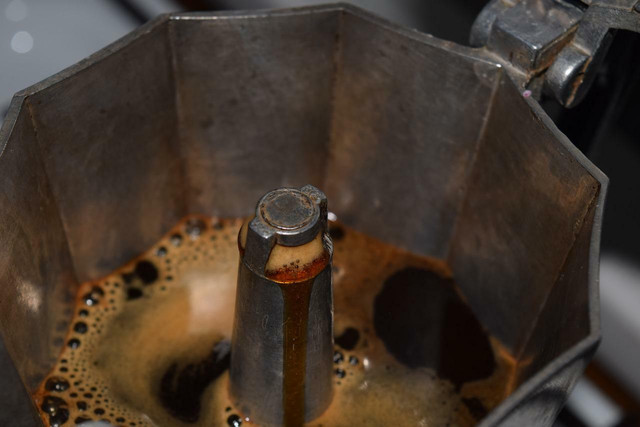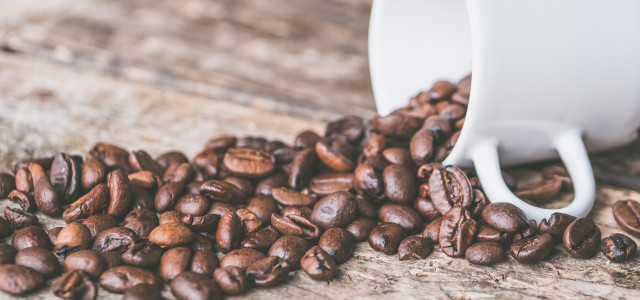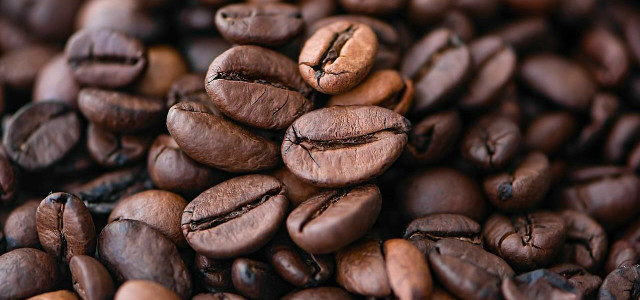Want to switch to decaf, but don't know how it's made? We'll explore the three main methods of coffee decaffeination and which yields the tastiest and most sustainable brew.
If you are looking for a way to get caffeine out of your system long-term, switching to decaf coffee may be the answer. Since coffee decaffeination usually leaves as much as three percent of the caffeine in the beans, decaf may be a gentler way of mitigating caffeine withdrawal without quitting coffee altogether. Coffee decaffeination always uses heat, water, and often chemicals to treat the beans, meaning that it is never quite as sustainable as regular coffee. Nonetheless, some coffee decaffeination methods are more sustainable and result in better flavors than others, so knowing how your coffee is made is important.
1. Solvent-Based Coffee Decaffeination



(Foto: CC0 / Pixabay / caspitina)
If you’re wondering whether decaf coffee is bad for you, it’s best to know what the decaffeination process entails exactly. The vast majority of decaf coffee is made using chemical solvents, which extract the caffeine molecules. The two solvents most commonly used are methylene chloride and ethyl acetate, both of which are toxic if ingested in larger amounts. Trace amounts of these solvents may remain in the coffee beans and are dubbed as safe for consumption by the FDA. Though both chemicals are synthetically produced, ethyl acetate is also found naturally in fruit and wine, so decaffeination using this solvent is often labeled as “natural”. Solvent coffee decaffeination follows two methods:
- Direct: Raw coffee beans are heated up, then bathed in a solvent to remove caffeine.
- Indirect: Raw coffee beans are first steeped in boiling water, this infused water is then mixed with the solvent to remove the caffeine, and the infused coffee water is then reabsorbed into the beans.
In either case, the beans are then superheated again to evaporate the leftover solvent, rendering the coffee safe to drink. Though this method is said to result in a superior flavor, it is also energy-intensive and results in solvent waste as a by-product. Methylene chloride in particular is linked with ozone depletion and cancer risk when released atmospherically. Fortunately, modern decaffeination methods store waste solvents until they naturally break down.
2. The Carbon Dioxide Method



(Foto: CC0 / Pixabay / ulleo)
The carbon dioxide method of coffee decaffeination is a natural way to decaffeinate coffee and is more sustainable than the solvent methods, but is also expensive and used primarily for very large commercial batches. In this method, coffee beans and carbon dioxide are highly pressurized in a steel chamber until the liquified carbon dioxide has extracted all of the caffeine. Despite the energy needed for pressurization, this method produces little waste since the carbon dioxide is recycled. The resulting coffee is often milder than regular caffeinated coffee which some people find more palatable.
3. The Swiss Water Process



(Foto: CC0 / Pixabay / chico明)
The Swiss Water Process of coffee decaffeination is another natural method for decaffeination. It is the least energy-intensive, uses no solvents, and is often used with organic, artisanal, or small-batch coffee. In this method, raw coffee beans are boiled to extract everything: caffeine, flavor, proteins, and aromatics. This resulting coffee water is then filtered through activated charcoal to remove caffeine molecules and then is finally reabsorbed back into the beans to preserve the original flavor. By only using water, this method is the most eco-friendly, and any losses in flavor are often outweighed by the use of organic, higher-quality beans. Kicking Horse coffee uses fairtrade and organic beans from Central and South America. They make their decaf coffee useing the Swiss Water Process, and it is available in stores, their onlineshop and on Amazon**.
Read more:
- 10 Coffee Substitutes That Are Tasty, Healthy, and Energizing
- 7 Sustainable Home and Garden Uses for Coffee Grounds
- Cold Brew Coffee: Possibly the Most Sustainable Brewing Method
Do you like this post?








